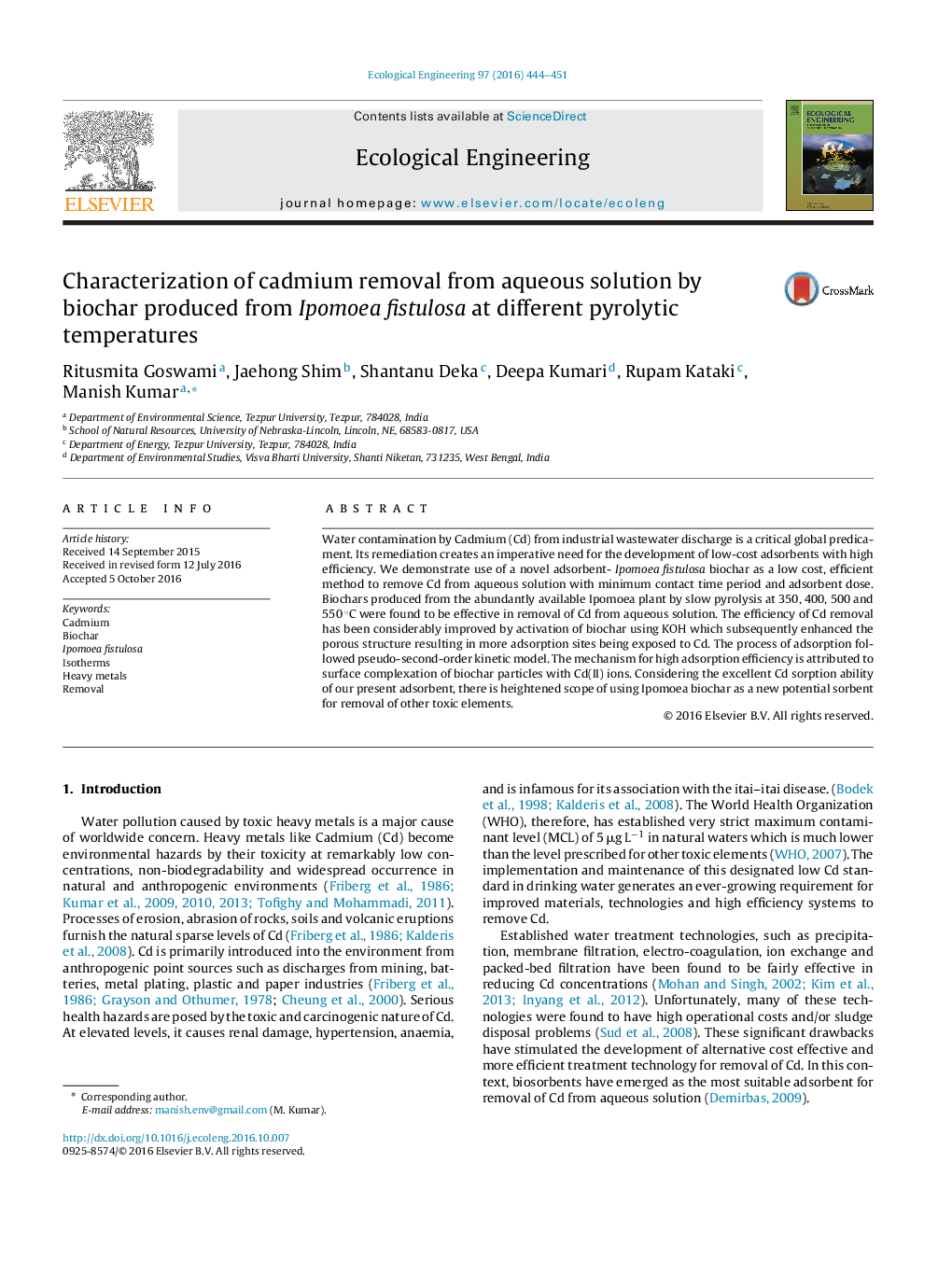| Article ID | Journal | Published Year | Pages | File Type |
|---|---|---|---|---|
| 4388405 | Ecological Engineering | 2016 | 8 Pages |
•A novel approach for Cd removal using Ipomoea (Ipomoea fistulosa).•Biochar showed a higher Cd sorption with increasing pyrolytic temperature.•The goodness of fit is better for the pseudo second-order kinetics model.•Cd removal by biochar found to be attributable to surface complexation.
Water contamination by Cadmium (Cd) from industrial wastewater discharge is a critical global predicament. Its remediation creates an imperative need for the development of low-cost adsorbents with high efficiency. We demonstrate use of a novel adsorbent- Ipomoea fistulosa biochar as a low cost, efficient method to remove Cd from aqueous solution with minimum contact time period and adsorbent dose. Biochars produced from the abundantly available Ipomoea plant by slow pyrolysis at 350, 400, 500 and 550 °C were found to be effective in removal of Cd from aqueous solution. The efficiency of Cd removal has been considerably improved by activation of biochar using KOH which subsequently enhanced the porous structure resulting in more adsorption sites being exposed to Cd. The process of adsorption followed pseudo-second-order kinetic model. The mechanism for high adsorption efficiency is attributed to surface complexation of biochar particles with Cd(II) ions. Considering the excellent Cd sorption ability of our present adsorbent, there is heightened scope of using Ipomoea biochar as a new potential sorbent for removal of other toxic elements.
Graphical abstractFigure optionsDownload full-size imageDownload as PowerPoint slide
